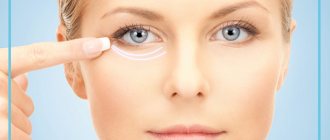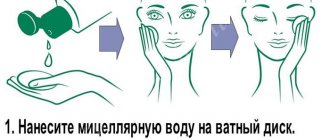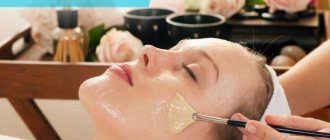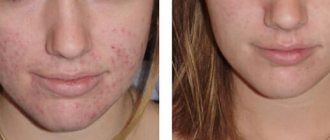Facial rejuvenation using the Beauty Eqipment IB-9090 device
In our center, located near the Shchukinskaya, Strogino and Tushinskaya metro stations, you can order a course of needle-free mesotherapy using the innovative Beauty Eqipment IB-9090 device. Its uniqueness lies in the fact that the device combines several functions at once: electroporation, cryotherapy and ultraphonophoresis. The combination of these three techniques helps to achieve quick and noticeable results: rejuvenate the skin, get rid of swelling, reduce cellulite and fat deposits, restore tissue, and improve overall appearance. The duration and type of exposure is chosen by the cosmetologist; the results are noticeable after the first session.
What does the procedure give?
First of all, Oxygen Lift Facial helps smooth out wrinkles, relieve fatigue and restore the skin to its natural healthy color. The procedure improves blood circulation and the production of collagen, which is responsible for the elasticity and firmness of the skin.
After oxygen lifting, the face looks younger, and the skin becomes tightened and more delicate. Serum supplied under pressure has an effect similar to that of a chemical peel.
During the procedure, the face gets rid of a layer of dead cells, thereby increasing the flow of oxygen to the skin. In addition, minor imperfections disappear: small wrinkles, age spots, gray skin color, etc.
One of the benefits of oxygen lifting is the ability to apply makeup immediately after the procedure. This is highly valued by professional makeup artists, actors, performers and other public figures.
At the same time, to achieve maximum effect, experts recommend taking a six-week course consisting of one procedure per week. In the future, to maintain the effect, it is enough to do lifting at least once a month.
Indications for oxygen therapy
Oxygen mesotherapy is prescribed for the following purposes:
- correction of age-related changes on the face (wrinkles, age spots, sagging skin);
- treatment of acne (as part of complex therapy);
- reduction of post-acne, freckles and age spots;
- general improvement in skin condition, increasing its elasticity;
- elimination of dark circles and bags under the eyes;
- moisturizing the skin, improving its turgor;
- reduction of body fat, fight against cellulite.
This is a very delicate and gentle procedure, so it can be used at any age.
What is oxygen lifting?
Before starting the procedure, specialists thoroughly cleanse the facial skin to obtain maximum results.
For this, as a rule, a special concentrate of fruit enzymes and enzymes is used. During cleansing, a slight tingling sensation may be felt on the face, which is caused by the action of fruit acids.
At the end of the cleansing, an oxygen serum is applied to the skin, which helps saturate it with vitamins, antioxidants, alpha hydroxy acids and peptides. Application is carried out using a special airbrush, which supplies oxygen serum in a thin stream under low pressure.
Oxygen therapy algorithm
An oxygen mesotherapy session takes on average 20 minutes. It is completely painless and consists of several stages.
- A cosmetologist prepares the skin: removes makeup, cleanses, degreases.
- Then you need to apply the desired serum to the work area - vitamin, moisturizing, anti-cellulite, cleansing, etc.
- To ensure that the medications penetrate deep into the skin, the doctor will use a special device that delivers a powerful stream of pure oxygen.
- Under the influence of oxygen flow, the skin increases its permeability, metabolism in its cells improves, and active drugs are better absorbed. In this case, the integrity of the epidermis is not compromised.
- At the end of the procedure, the specialist can apply caring oil, spray, cream or other cosmetics to the face or body.
Oxygen mesotherapy should be carried out in courses of 5-10 procedures every 3-4 days. The exact number of procedures is determined by the doctor, based on the condition of the skin and the objectives. The cosmetologist will also select the optimal composition of meso-cocktails.
Oxygen facial treatments: are they worth it?
Popular myths about oxygen are commented on by cosmetologist Ekaterina Glagoleva .
Many people believe that facial procedures using oxygen have a very short-term effect, which is enough, for example, for going out. But is this really so? Can oxygen treatments be considered full-fledged skin care or is it a “Cinderella carriage”? Oxygen in cosmetology, shrouded in myths and explanations that are not always correct from a chemical point of view, makes many smile skeptically and discredits the method. Let's figure out what oxygen procedures are, their purpose, indications and contraindications.
Myth One. Oxygen cannot penetrate the skin.
Yes/ No
Research proves that skin cells receive oxygen both from the external environment and directly from the body. The balance between these two sources is constantly changing depending on the availability of absorbed oxygen. In the case of oxygen therapy procedures, the balance shifts towards external consumption. Air contains about 20% oxygen. If you increase the oxygen concentration and its pressure, the rate of oxygen exchange in the epidermal cells will also increase.
Supplying cells with oxygen implies its penetration through the protective barrier of the epidermis. At the moment, there are very few modern fundamental works on oxygen therapy and gas exchange in the skin, but many things become clearer for specialists after reading the article by Elena Hernandez “Oxygen and skin: can the skin breathe?” (Cosmet & Med. 2005;1:4-13.) Where the author convincingly explains the impossibility of hyperoxygenation of intact tissue. But since the stratum corneum of the epidermis can safely be considered “a kind of sensor of damage to the epidermis, the mechanisms for restoring the protective barrier of the skin are activated when the permeability of the stratum corneum increases, including for oxygen, which causes a compensatory increase in the metabolic activity of keratinocytes and, apparently, an increase in the utilization of intracellular oxygen. It is at this moment that it is extremely desirable to support the cell in need and provide a surge in metabolic activity.”
Myth Second. Real oxygen concentrators are only used in hospitals.
Yes/ No
To create a pressure of more than 1 atmosphere, you need either an oxygen concentrator or oxygen in cylinders. However, the latter is very explosive, in addition, the cylinders require refilling, so this kind of oxygen is not really used in oxygen therapy.
An oxygen concentrator releases gas from the air in the room. To do this, it is pumped under pressure into a special chamber filled with natural porous zeolite stone. Zeolite pores are the same size as nitrogen molecules, which makes up 75% of the air around us, another 21% is oxygen and 4% are inert gases. When pressure is created in the chamber, nitrogen remains in the zeolite, and oxygen passes on. After normalizing the pressure in the apparatus, nitrogen is released into the environment.
Equipment for oxygen procedures is based on oxygen concentrators, to which various attachments are attached. The main thing is that the pressure required to perform cosmetic manipulations coincides with the pressure in the concentrator.
There are several ways to “deliver” oxygen to the skin of the face:
- oxygen-liquid irrigation (spray) The nebulizer supplies oxygen to the surface of the skin, which quickly penetrates directly into the cells through cell membranes. Oxygen can be supplied both in gaseous and liquid form, in combination with special preparations. This method of oxygen therapy is often used during the rehabilitation period after traumatic procedures such as median peels, laser resurfacing and dermabrasion. And also during the recovery period after plastic surgery.
- oxygen supply under pressure This method of “delivery” of oxygen to the middle layers of the epidermis is called oxy-“meso” therapy or oxygen injection.
The device delivers oxygen and possible serum options to the surface of the skin under a pressure of 2 bar. This mechanism makes it possible to achieve changes in the properties of the stratum corneum and increase transcutaneous absorption of active substances. Experts talk about a 10-15-fold increase in the absorption of low-molecular-weight cosmetics administered by oxygen therapy by epidermal cells.
Myth Three. Oxygen therapy stimulates the synthesis of new collagen.
Yes/ No
Perhaps it is precisely statements such as: “oxygen under pressure of 2 atmospheres promotes deep lifting” or “irrigation with oxygen improves metabolic processes in the skin and thereby triggers neocollagenogenesis” that have given the method of skin oxygenation not the most positive reputation. Fortunately, the situation is changing for the better and manufacturers and distributors of devices for oxygen procedures are putting less and less emphasis on the synthesis of collagen and strengthening the dermal matrix, focusing on the development of methods for transcutaneous delivery of drugs using oxygen, since this chemical element has a small molecular weight and penetrates into cells skin by passive diffusion and appears to be capable of deep penetration.
Myth Four. Oxygen therapy against acne
Yes / No
We tend to agree with this statement, based on the links in the pathogenesis of acne. The pathogen that causes this chronic relapsing disease “Propionibacterium acnes” is an anaerobic, an airless environment is ideal for their reproduction.
Thus, a combination of adequate basic care, dermatological treatment and oxygen therapy gives good therapeutic results.
Myth Five. Oxidation and Aging
Yes/ No
Perhaps one of the most widespread fears about tissue oxidation when using both oxygen procedures and oxygen cosmetics, the roots of this statement lie in the free radical theory of aging, put forward in 1956 by Harman. This theory is based on the principle that reactive oxygen species cause damage to membranes, collagen, DNA, chromatin, structural proteins. To debunk this myth, it is very important to distinguish oxygen from oxygen.
In the air, oxygen is in the form of O2 molecules, consisting of two atoms. This molecule is stable - to split it into atoms, energy and the presence of specific conditions are required. It is this molecular oxygen from the air that dissolves in microemulsion particles and is used in oxygen procedures.
Atomic oxygen O+ can be formed during some chemical reactions, for example during the decomposition of hydrogen peroxide. It is this that is the oxidizing agent – the free radical.
In conclusion, I would really like to say that oxygen therapy techniques, used as intended and in a set of procedures, without trying to endow each of them with the properties of a panacea, can really work wonders.









